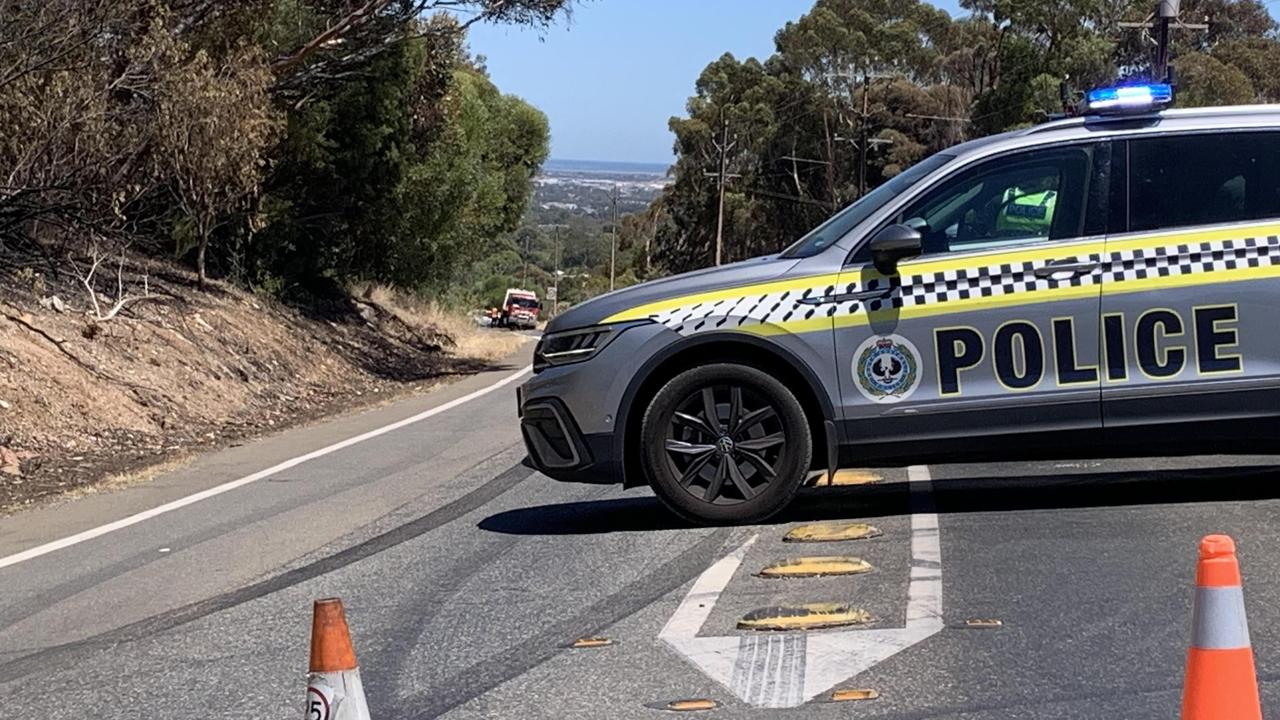St Kilda township: dying trees on residential properties, parks, streets follow mangrove dieback
First withering mangroves and tidal saltmarsh, now trees are dying in the streets, parks and backyard gardens at St Kilda.

SA News
Don't miss out on the headlines from SA News. Followed categories will be added to My News.
St Kilda residents say trees and plants on their properties are being killed by the same hypersaline water that has wiped out dozens of hectares of mangroves.
For months, the public outcry over water leaking from salt miner Buckland Dry Creek’s evaporation ponds has centred on its devastating impact on the area’s protected mangroves.
Now residents are worried about the problem spreading inland through their suburb via groundwater flows beneath their properties.
Salisbury Council has established a new register for affected trees in the area, with 14 reports to date across public and private properties
Trees at five residential addresses, street trees along Salt, Shell and Curnow streets, and ones in Mangrove Street Reserve and the St Kilda Playground barbecue area have been reported as dead or severely deteriorating.
The sites are mostly at the southern end of the suburb.
Kevin Collins, 80, planted a gum tree in his yard at the suburb’s northern end not long after he moved to St Kilda with his wife, Marilyn, 32 years ago.
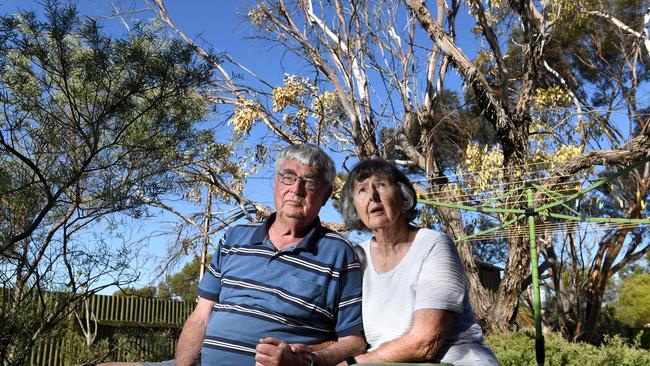
“We know that the trees down the other end of town, on the southern end of town, have been severely affected by the salt. But this particular tree has just died suddenly and we can’t account for it,” he said.
“We're hoping that it's not the salt coming across, but it's a possibility that it’s the salt leaching through from the salt lakes.”
Mr Collins said it was “very disappointing” to witness how slow the State Government had been in reacting to the problem, originally caused by Buckland Dry Creek filling a disused evaporation pond near the mangrove boardwalk trail that then leaked.
“We’re worried about the future if they don’t manage this properly,” Mr Collins said.
“We’re just hoping that it doesn’t cause all the trees and mangroves on the northern side of town to die.”
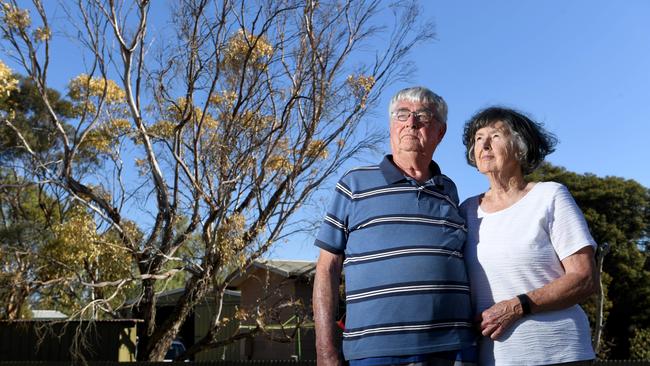
Following informal reports of the declining health of vegetation in the area, the council contacted residents, inviting them to detail their own observations in order to gauge the extent of the issue.
“There are 14 reports of trees deteriorating in the St Kilda area with these predominantly relating to gum trees, but also fruit trees, as well as general reports of deteriorated condition of other vegetation,” a council spokeswoman said.
“The continued preservation of the St Kilda mangroves and surrounding area is critical.
As the mangroves are under the care of the government, the council will continue to actively work with relevant stakeholders in investigating the issue.”
Conservation Council SA chief executive Craig Wilkins anticipated the next problem would be damage to septic tanks and house footings.
“So, we think there needs to be further investigation by authorities over where exactly the spread is in the township,” he said. “So far, they’ve tended to avoid looking at that.”
Independent scientist Dr Peri Coleman, who has represented the local community in its bid to raise awareness of the problem, said Buckland Dry Creek “hasn’t spoken to the people of St Kilda about the dead mangroves, dead gardens and dead parklands”.
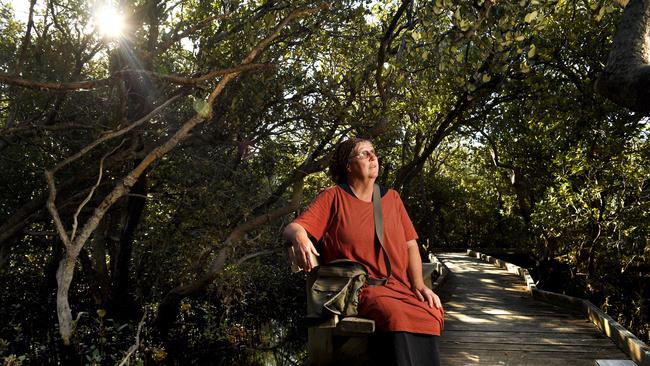
“The people responsible have not stepped forward, come to a town-hall meeting to explain what’s going on,” she said. The company did not respond to request for comment.
The Sunday Mail put questions to Energy and Mining Minister Dan van Holst Pellekaan, his department and the Environment Protection Authority about concerns for trees and vegetation on council and private land.
The department provided a response on behalf of all three that did not address those questions.
“Government is committed to ensuring that interested people and the local community are updated and contributing input to the co-ordinated response that is under way,” a department spokesman said.
“A number of activities have already been undertaken by government to update and engage with the community and seek their contributions.”
He invited interested people to visit the Energy and Mining Department website for regular updates and information regarding the Dry Creek salt fields.
VITAL SIGNS OF LIFE AT ST KILDA MANGROVE TRAIL
MANGROVES at St Kilda are flowering, clearing the salt through their lower branches and putting their last gasp of energy into reproduction.
Nature is doing its best to recover from the devastation wrought by hypersaline acidic brine that leached into the Adelaide International Bird Sanctuary National Park over spring and summer.
According to the latest State Government update, at least 10ha of mangroves have died.
But aerial surveys by Airborne Research Australia shows close to 80ha dead or dying.
A further 70ha of mangroves are stressed and suffering.
As St Kilda resident and independent scientist Dr Peri Coleman weaves her way along the mangrove boardwalk trail, she finds signs of life.
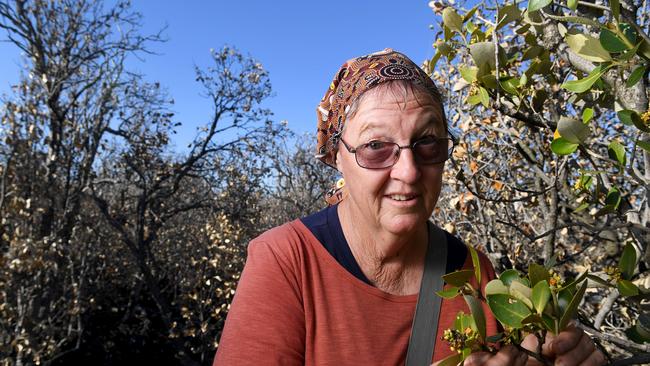
“The plants that haven’t died that are coping, barely, are partitioning salt, excreting or removing salt from their lower leaves so that the leaves at the top don’t have to,” she said.
“So they can have flowers – they can make babies if you like – and they’re flowering now, producing little yellow flowers with sweet nectar.”
But the baby plants will not have a chance to grow if they settle in toxic sediment smothered in hypersaline brine.
“We’ve got to get the soil right now,” Dr Coleman said.
“With all of the dead, rotting vegetation we’re getting sulphur-reducing bacteria in the … mud.
“So, instead of brown, healthy soil, it turns black.
“You can take an auger or small spade and dig into the ground there and it’s absolutely black.
“It smells like rotten eggs.”
Dr Coleman has not given up hope but she knows it will be a long road ahead for the fragile ecosystem to recover.
Visit savestkildamangroves.com
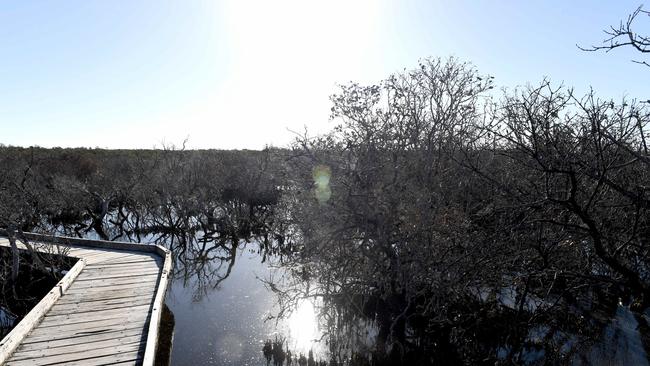
SLOW PROGRESS
Pumping in the vicinity of dead mangroves at St Kilda has progressed as levels of super-salty water in the pond nearby have dropped, the State Government says.
Late last year, at least 10 hectares of mangroves and 35 hectares of intertidal saltmarsh died at St Kilda after disused evaporation ponds were filled and then leaked.
In March the Environment Protection Authority stepped in to help with the clean up, working alongside the salt miner Buckland Dry Creek.
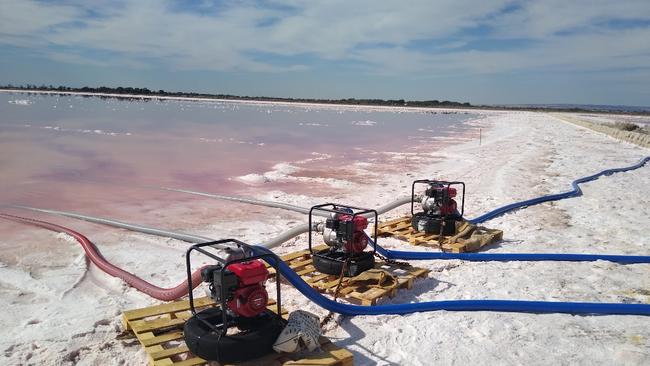
Six portable transfer pumps have been installed in targeted areas, the Energy and Mining Department said on Wednesday.
“The Environment Protection Authority has advised the government that the process has been successful in reducing the volume of water in both ponds, and made the shallower pond edges more susceptible to evaporation,” a spokesman said.
“The EPA has also recorded a significant decrease in groundwater pressure since the process began.”
By mid-April, more than 35 million litres of hypersaline brine is expected to have been pumped at the site, which is about half the volume of brine that was estimated to be held in the closest pond at the start of the pumping program.
Conservation Council SA chief executive Craig Wilkins welcomed recent efforts but said most of the toxic brine has left the pond through leakage, rather than pumping.
“The State Government and the company need to commit to removing all risk of further damage,” he said.
“As it stands, the risk to the mangroves is lessened but very much still remains.”
More Coverage






